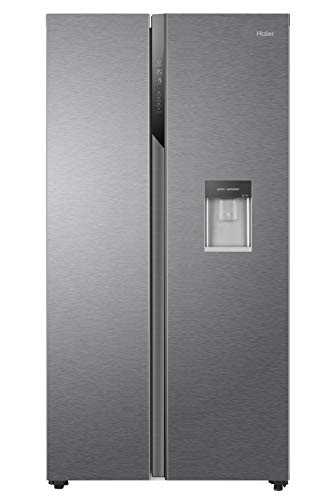10 Facts About Fridges That Can Instantly Put You In The Best Mood

The Ultimate Guide to Buying a Fridge: Making Smart Choices for Your Kitchen
When it concerns necessary kitchen appliances, few products are as essential as a refrigerator. It is the heart of the cooking area-- keeping your food fresh and your ingredients at optimal temperatures. Nevertheless, choosing the right fridge can be an overwhelming job, offered the variety of designs, sizes, and technologies readily available on the market. This guide will offer important insights into the factors to consider when purchasing a fridge, typical types, and often asked concerns to assist you make a notified choice.
Key Factors to Consider When Buying a Fridge
To streamline your decision-making procedure, here are the core elements one should consider when seeking to buy a fridge:
1. Size
- Cooking area Space: Measure the space in your cooking area where the fridge will be put. This consists of examining entrances to ensure the fridge can be delivered without issue.
- Capability: Consider just how much food you normally save. A larger household might require a fridge with a capacity of 20-26 cubic feet, while smaller households might find 10-18 cubic feet enough.
2. Style
- Top Freezer Refrigerators: A standard choice that features a freezer on top. They are generally more budget friendly and energy-efficient.
- Bottom Freezer Refrigerators: Offers convenience by positioning the refrigerator section at eye level. Perfect for those who access fresh food regularly.
- Side-by-Side Refrigerators: Provides simple access to both freezer and fresh food sections. Helpful for narrow kitchens.
- French Door Refrigerators: Combines the benefits of bottom freezers with side-by-side layouts. They typically feature extra features such as ice and water dispensers.
- Compact Refrigerators: Perfect for small spaces like dormitory or offices.
3. Energy Efficiency
- Try to find energy-efficient models to save money on electrical energy bills. Examine the Energy Star label, which shows that the device meets or surpasses energy effectiveness requirements.
- Consider the average yearly energy intake reported in kilowatt-hours (kWh).
4. Features
- Ice and Water Dispenser: Convenient for instantaneous access to ice and filtered water.
- Smart Technology: Some fridges come equipped with Wi-Fi connectivity that permits you to keep track of and change settings from your smart device.
- Adjustable Shelves and Bins: For customizable storage to accommodate high products.
- Temperature Level Control Zones: Different locations may have various environment controls for optimum storage of numerous foods.
5. Rate
- Set a spending plan. Fridge prices can vary from a few hundred to several thousand dollars depending on style, size, and features.
- Consider extra expenses such as extended warranties, shipment, and installation.
Comparative Table of Popular Fridge Styles
| Fridge Style | Average Price Range | Pros | Cons |
|---|---|---|---|
| Top Freezer | ₤ 400 - ₤ 1,200 | Inexpensive, energy-efficient | Restricted features |
| Bottom Freezer | ₤ 900 - ₤ 2,500 | Easy access to fresh food | Can be pricey |
| Side-by-Side | ₤ 600 - ₤ 3,000 | Excellent company, easy access | Freezer space can be limited |
| French Door | ₤ 1,200 - ₤ 4,000 | Large, trendy, typically feature-rich | Higher price point |
| Compact | ₤ 150 - ₤ 600 | Space-saving, portable | Restricted storage capacity |
Often Asked Questions (FAQs)
1. For how long do fridges usually last?
Usually, a well-maintained refrigerator can last around 10 to 20 years. Routine maintenance, such as cleaning the coils and examining door seals, can extend its lifespan.
2. How can I maintain my fridge efficiently?
- Keep the coils clean to help maintain energy efficiency.
- Make sure that the door seals are tight to avoid cold air from leaving.
- Regularly defrost (if suitable) and clean the interior to avoid accumulation of germs and odors.
3. Do I require to spend for shipment and installation?
Many retailers charge for delivery and setup, however this cost can in some cases be waived throughout promotions. Constantly confirm Kevin Loeber before finishing your purchase.
4. What should I do if my fridge is not cooling appropriately?
Start by examining the temperature level settings and make sure the vents are clear of any obstructions. If the concern continues, it might be necessary to seek advice from a professional repair work service.
5. How can I identify the size of the fridge I need?
As a general guideline, enable about 4 to 6 cubic feet of area per individual in your household. However, this can vary based on specific cooking and storage routines.
Buying a refrigerator might seem easy, however it requires careful consideration of different aspects. By assessing your needs and preferences in regards to size, design, features, and energy performance, you're better positioned to select a fridge that will serve your home well for years to come. This guide aims to simplify the intricacies associated with fridge shopping, empowering you to make a notified choice that will boost your cooking area experience. Whether you're updating or buying your first unit, a little research study can cause a refrigerator that completely fits your lifestyle and cooking habits.

